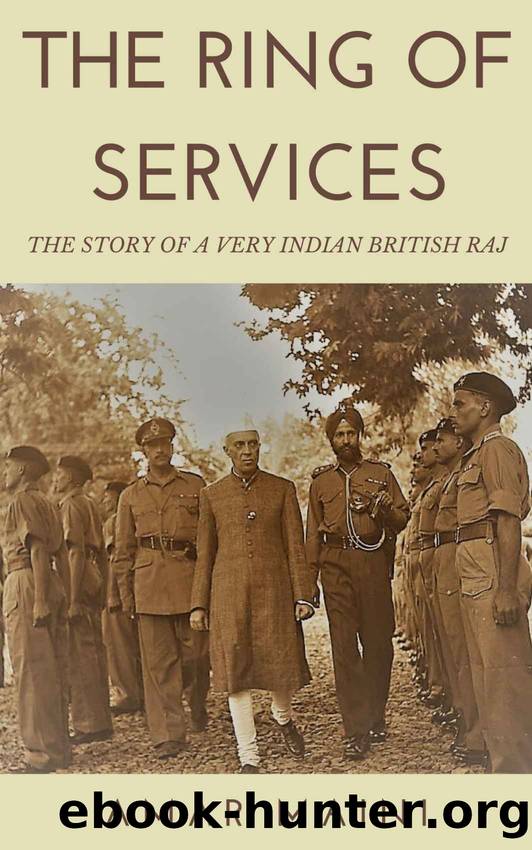The Ring of Services: The Story of a Very Indian British Raj by Amar Maini

Author:Amar Maini [Maini, Amar]
Language: eng
Format: epub
Published: 2018-06-29T18:30:00+00:00
â½â½â½
Once a young Indian officer completed his training and passed the probationary period he would take up his first independent charge as an assistant superintendent of police. It was an opportunity to bring an Indian perspective to police work, establish his own relationships in his district, and work out his own means for projecting the authority of his rank. Indian officers would now have to manage the Case Diaries and First Information Reports themselves, and some would add their own innovations to the paper trail at the heart of the British system of policing India.
In January 1927 Narayanrao Kamte was transferred to Sholapur as assistant superintendent in charge of sub division Pandharpur in Bombay.[ccxxvi] Pandharpur was a holy town, a place of pilgrimage for devotees from across the Deccan. During Ashadh, which fell in July, the number of warkaris, or pilgrims numbered over 100,000, an influx of people which posed endless challenges for the police. On his way to take charge of Pandharpur, Kamte had a discussion with his friend Madhusudan Bhat of the Indian Civil Service who was the assistant collector of Sholapur. Bhat suggested that Kamte look into the harassment and extortion of pilgrims who visited the temple of Vithoba. The Badves, who were the custodians of the temple, were entitled to a dakshina, whilst the pujaris would also demand a gift of equal value called 'ovalni'. The custom amounted to a form of double taxation for the hapless pilgrims.
Kamte decided to investigate the issue himself, and so entered the temple in plain clothes. He bowed before the idol and deposited his dakshina of one silver rupee. He was then picked up by one of the Badves, and then by a pujari who demanded his ovalni. Kamte pleaded that he had already deposited his dakshina which was all the money that he had, but the pujari ordered him to go home and fetch some more. Kamte asked the pujari to let go of his neck and to proceed outside. Once they were outside the temple Kamte let fly and slapped the pujari. This attracted the uniformed constables on duty, one of whom did not initially recognise the assistant superintendent of police and wanted to take him to the police station. The sub inspector however recognised Kamte, saluted and begged forgiveness for the erring constable. Kamte suspected the constables were receiving a share of the dakshina and ovalni money, and so decided to punish the constable, although lightly. The Badves and pujaris also asked that the pujari not be punished, but Kamte wanted to make an example of him. The case was eventually taken to court and Kamte recommended a token fine. Kamte thought his work at the Vithoba temple was a good example of what an Indian police officer could do; British officers had never entered the temple which meant that the extortion had been allowed to go on undisturbed for years.
On a visit to his Superintendent, Cyril Pegge's office, Kamte sat and observed his method of writing up Crime Registers.
Download
This site does not store any files on its server. We only index and link to content provided by other sites. Please contact the content providers to delete copyright contents if any and email us, we'll remove relevant links or contents immediately.
| Central Asia | Southeast Asia |
| China | Hong Kong |
| India | Japan |
| Korea | Pakistan |
| Philippines | Russia |
The Sympathizer by Viet Thanh Nguyen(4307)
The Rape of Nanking by Iris Chang(4140)
World without end by Ken Follett(3432)
Ants Among Elephants by Sujatha Gidla(3417)
Blood and Sand by Alex Von Tunzelmann(3140)
Japanese Design by Patricia J. Graham(3112)
City of Djinns: a year in Delhi by William Dalrymple(2516)
The Queen of Nothing by Holly Black(2499)
Foreign Devils on the Silk Road: The Search for the Lost Treasures of Central Asia by Peter Hopkirk(2434)
India's Ancient Past by R.S. Sharma(2417)
Inglorious Empire by Shashi Tharoor(2396)
Tokyo by Rob Goss(2390)
In Order to Live: A North Korean Girl's Journey to Freedom by Yeonmi Park(2348)
India's biggest cover-up by Dhar Anuj(2319)
Tokyo Geek's Guide: Manga, Anime, Gaming, Cosplay, Toys, Idols & More - The Ultimate Guide to Japan's Otaku Culture by Simone Gianni(2316)
The Great Game: On Secret Service in High Asia by Peter Hopkirk(2305)
Goodbye Madame Butterfly(2208)
Batik by Rudolf Smend(2127)
Living Silence in Burma by Christina Fink(2038)
